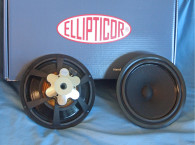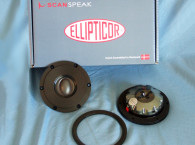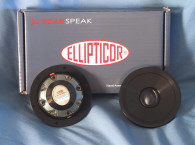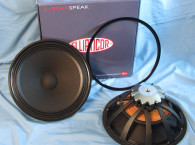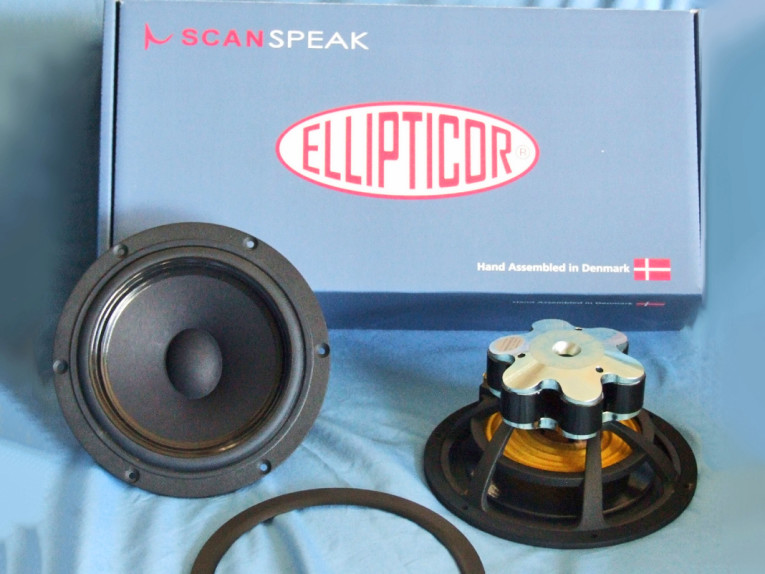
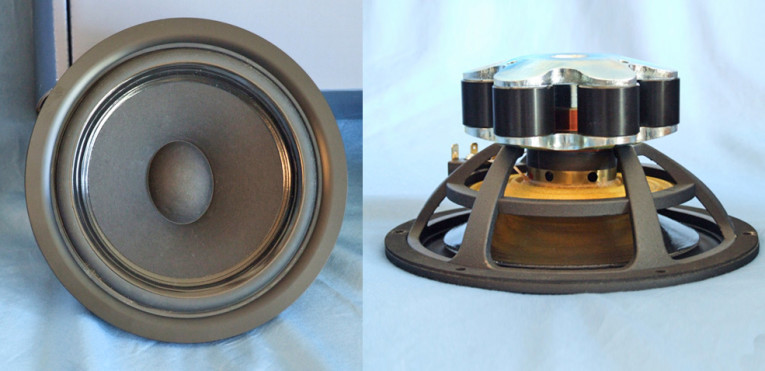
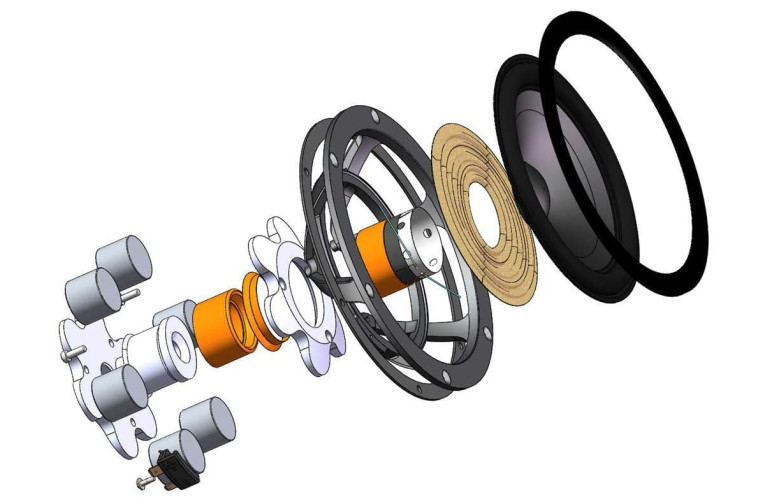


The idea of using elliptical-shaped voice coils to control cone and dome modes came from an engineering brain storming session that involved Birger Jorgensen (sadly Birger passed nearly two years ago). One of the goals for a new driver concept at Scan-Speak was to minimize cone modes, so it was kind of a joke to suggest an elliptical voice coil, but some engineering humor that had some solid science behind it. By not driving the diaphragm asymmetrically, what you get is an “infinite” number of Eigen frequencies, but with less contribution for each frequency and overall lower distortion. Driving the diaphragm symmetrically you get a finite number of Eigen frequencies with a higher contribution combining at certain frequencies producing the “dreaded” coloration modes.
From this exciting concept, developed at Scan-Speak, came the two elliptical voice coil samples that the company sent me for Test Bench, the Ellipticor D3404/552000 tweeter, and the 18WE/4542T00 7” diameter midbass driver shown in Photo 1 and detailed in Photo 2. Photo 3 shows the exploded diagram for the 18WE/4542T00.
I started setting up to measure the Scan-Speak 7” 18WE/4542T00 Ellipticor midwoofer. Like the D3404, the 18WE/4542T00 is a seriously feature rich transducer. Starting with the frame, like most of Scan-Speak’s midwoofer/midrange frames, the 18WE frame is a nicely configured three double spoke (six total) cast-aluminum frame with narrow 12 mm wide spokes to minimize reflections back into the cone. The area below the suspended spider mounting shelf is almost completely open, resulting in effective cooling of the motor and voice coil. For the cone assembly, Scan-Speak chose a rather stiff curvilinear profile back coated paper cone with an elliptical 45 mm × 35 mm convex paper dustcap. Compliance is provided by an NBR surround, nicely designed with a shallow discontinuity where it attaches to the cone edge plus a surface coating for enhanced damping in that critical region. Remaining compliance comes from a 4” diameter flat cloth spider.
The motor design for the Ellipticor 18WE/4542T00, as with the D3404/552000, is also an Air-Circ multi magnet design utilizing six 22 mm high and 25 mm diameter neodymium slugs with a black emissive coating. This is also one of Scan-Speak’s patented SD motor systems and so incorporates copper shorting rings (Faraday shields). FEA designed, the neodymium magnet motor uses a 35 mm × 45 mm elliptical two-layer voice coil wound with round copper wire on a titanium former. Motor parts include polished front and back plates for the neodymium magnets that incorporate a 12 mm diameter rear vent for additional cooling.
As with the D3404/552000 tweeter, the 18WE/4542T00 has a magnetically attached aluminum trim ring that can obviously be anodized a variety of colors besides black. Last, the voice coil is terminated to a pair of gold-plated terminals. In terms of physical appearance, this driver is simply stunning.

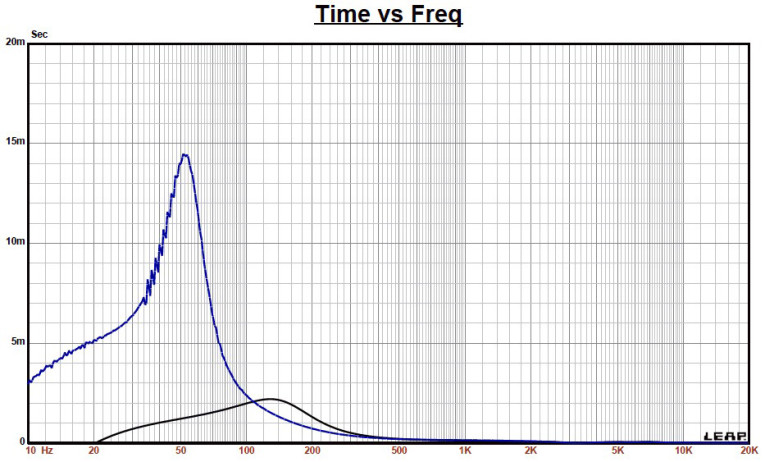
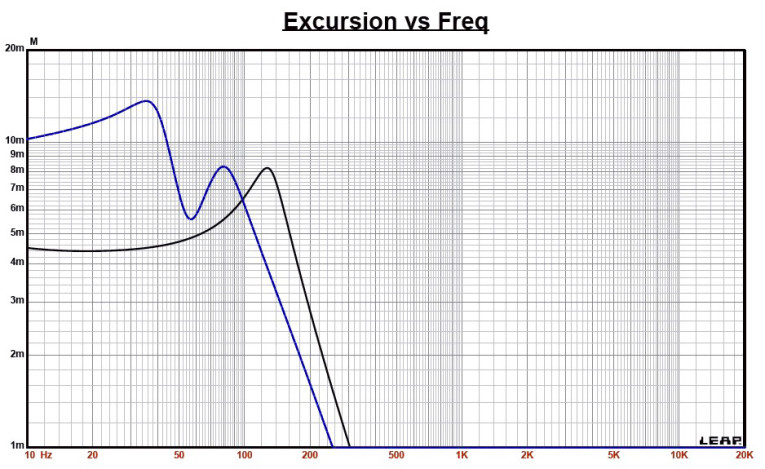
I began analysis of the 18WE/4542T00, using the LinearX LMS analyzer and VIBox to create both voltage and admittance (current) curves, with the driver clamped to a rigid test fixture in free-air at 0.3 V, 1 V, 3 V, 6 V, 10 V, and 15 V. As with almost all 6.5” to 7” diameter woofers, 10 V curves are usually too nonlinear for LEAP to get a reasonable curve fit and usually have to be discarded, however, due to the linearity and fairly high Xmax of the 18WE/552000, I was able to use all the curves including the 15 V curves, which is unusual for this diameter midbass driver.
As has become the protocol for Test Bench testing, I no longer use a single added mass measurement to determine Vas. Instead, I use the actual measured cone assembly mass (Mmd) supplied by the driver manufacturer, which was 16.5 grams for the Scan-Speak 7” woofer. Next, I post-processed the 12 550-point stepped sine wave sweeps for each Ellipticor 18WE sample and divided the voltage curves by the current curves (admittance) to derive impedance curves, phase added by the LMS calculation method.
Along with the accompanying voltage curves, I imported the data into the LEAP 5 Enclosure Shop software. Since most Thiele-Small (T-S) data provided by the majority of OEM manufacturers is generated using either the standard model or the LEAP 4 TSL model, I additionally created a LEAP 4 TSL parameter set using the 1 V free-air curves. I selected the complete data set, the multiple voltage impedance curves for the LTD model, and the 1 V impedance curve for the TSL model in the transducer derivation menu in LEAP 5 and created the parameters for the computer box simulations. Figure 1 shows the 1 V free-air impedance curve. Table 1 compares the LEAP 5 LTD, TSL and factory published parameters for both of Scan-Speak 18WE/4542T00 samples.
LEAP parameter calculation results for the Elllipticor 18WE/4542T00 were close to the published factory data. I followed my normal protocol and began setting up computer enclosure simulations using the LEAP LTD parameters for Sample 1. I programmed two computer box simulations into LEAP 5, one a Butterworth sealed box with a 140 in3 volume 50% fiberglass damping material and a vented enclosure with a 0.65 ft3 volume tuned to 55 Hz with 15% fiberglass fill material.
Figure 2 displays the results for the Ellipticor 18WE/4542T00 in the vented and sealed boxes at 2.83 V and at a voltage level sufficiently high enough to increase cone excursion to Xmax + 15% (8.3 mm for the 18WE/4542T00). This produced a F3 frequency of 126 Hz (F6 = 102 Hz) with a Qtc = 0.68 for the sealed enclosure and –3 dB = 51 Hz (F6 = 46 Hz) for the vented box. Increasing the voltage input to the simulations until the maximum linear cone excursion was reached resulted in 117.7 dB at 58 V for the sealed enclosure simulation and 114 dB for a 33 V input level for the vented enclosure. Figure 3 shows the 2.83 V group delay curves. Figure 4 shows the 58/33 V excursion curves. The sealed box simulation volume is really too small to be practical, which suggest that if you were to use this woofer in a three-way system crossed at 150 to 200 Hz, it would be better to use a larger volume with a lower Qtc.
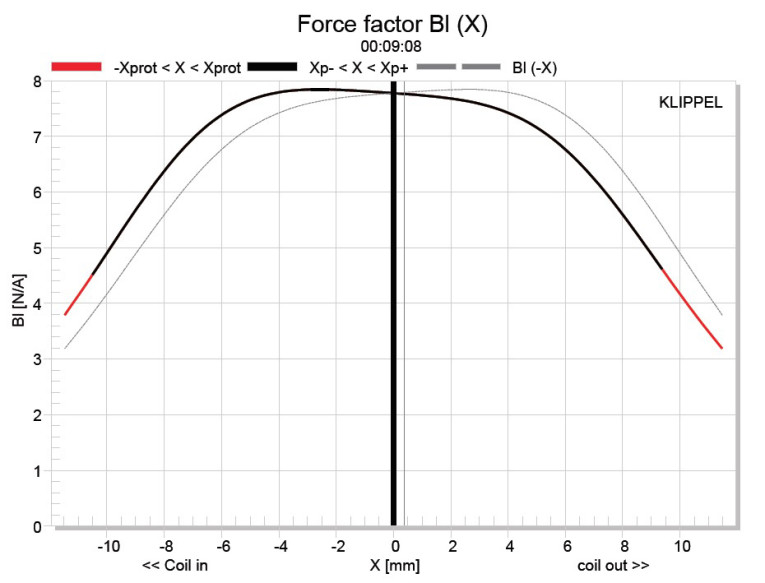


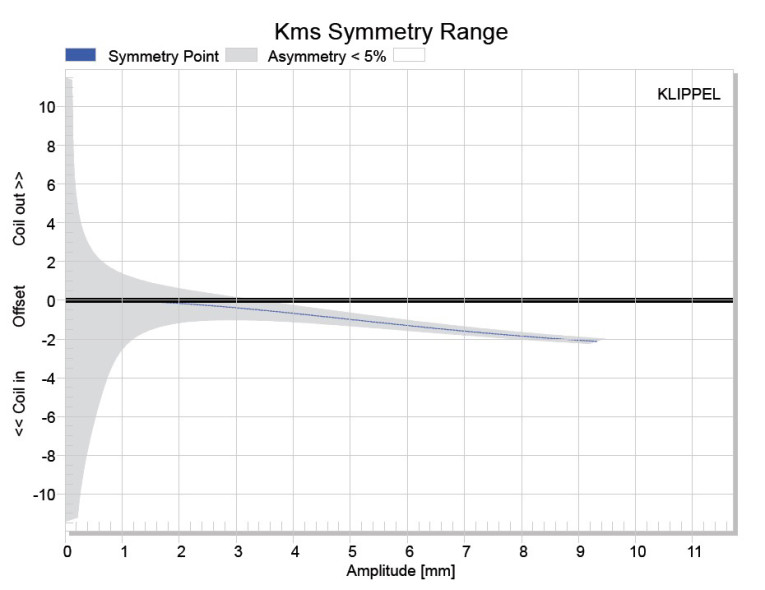
Klippel analysis for the Scan-Speak 7” midwoofer (produced the Bl(X), Kms(X), and Bl and Kms symmetry range plots shown in Figures 5–8. (Our analyzer is provided courtesy of Klippel GmbH and the analysis was performed by Pat Turnmire, Redrock Acoustics. This data is extremely valuable for transducer engineering, so if you don’t own a Klippel analyzer and would like to have analysis done on a particular project, visit www.redrockacoustics.com.)
The Bl(X) curve (see Figure 5) is mostly symmetrical with a small amount of tilt and coil-in offset, however this is fairly broad Bl curve for a 6.5” to 7” woofer. Looking at the Bl symmetry plot (see Figure 6), from an area of reasonable certainty (the grey overlay) at 5.5 mm the coil-in offset is 0.8 mm gradually decreasing coil-in offset that is only 0.56 mm the drivers Xmax +15% position (8.3 mm), which is rather minor.
Figure 7 and Figure 8 show the Kms(X) and Kms symmetry range curves. The Kms(X) curve is not as symmetrical in both directions as the Bl curve, and shows an increasing coil-in offset that reaches 1.62 mm at the physical Xmax position, which is not critical.


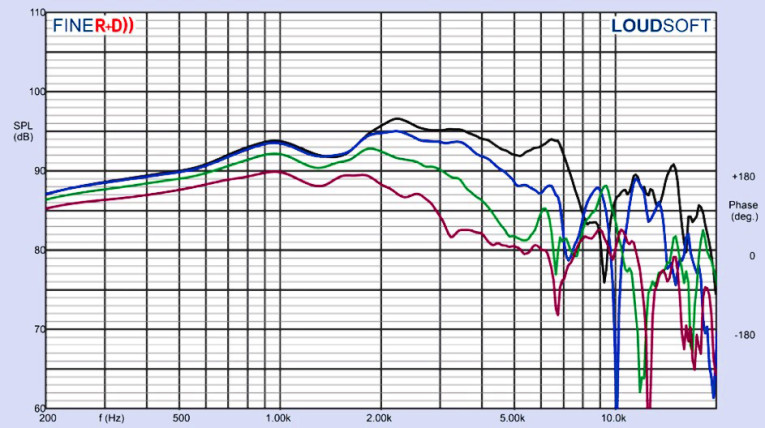

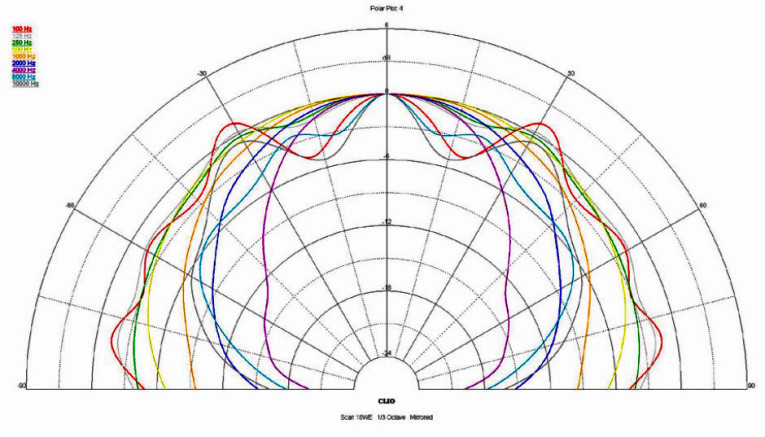
Displacement limiting numbers calculated by the Klippel analyzer for the Scan-Speak 18WE/4542T00 were XBl @ 82% Bl = 6.7 mm and for crossover (XC) at 75% Cms minimum was 5.2 mm, which means that for this Elllipticor midwoofer, the compliance is the most limiting factor for prescribed distortion level of 10%. If we use a less conservative 20% distortion criteria of Bl falling to 70% of its max value and compliance falling to 50% of it maximum value, the numbers would be XBl = 8.2 mm and XC = 7.9, with both numbers being greater than physical 7.25 mm driver’s Xmax.
Figure 9 gives the inductance curves Le(X) for the 18WE/4542T00. Inductance will typically increase in the rear direction from the zero rest position as the voice coil covers more pole area, which is what you see here. However, because of the effective use of copper shorting rings, the inductive swing from Xmax in to Xmax out is a very small 0.037 mH, which is very good performance.
With the Klippel testing completed, I mounted the Ellipticor 18WE/4542T00 woofer in an enclosure, which had a 15” × 8” baffle and was filled with damping material (foam). Then, I used the LOUDSOFT FINE R+D FFT analyzer to measure the device under test (DUT) on and off axis from 300 Hz to 40 kHz frequency response at 2.83 V/1 m. Figure 10 gives the 18WE/4542T00’s on-axis response indicating a smoothly rising response to about 4 kHz where it begins its low-pass roll-off.
Figure 11 shows the on- and off-axis frequency response at 0°, 15°, 30°, and 45°. The -3 dB frequency at 30° off-axis relative to the on-axis SPL is about 2 kHz, suggesting a crossover between 1.8 to 2.5 kHz should be appropriate. Figure 12 shows the normalized version of Figure 11, with the CLIO polar plot (done in 10° increments) displayed in Figure 13. And finally, Figure 14 gives the two-sample SPL comparisons for the 7” Ellipticor driver, showing a close match (less than 0.5 dB variation) throughout the operating range.
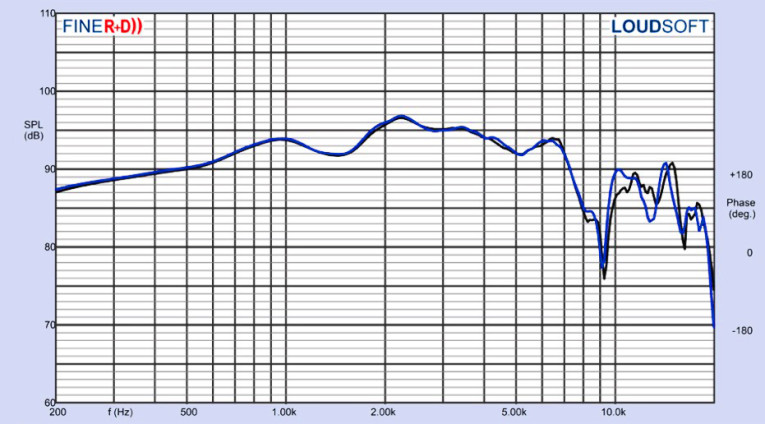

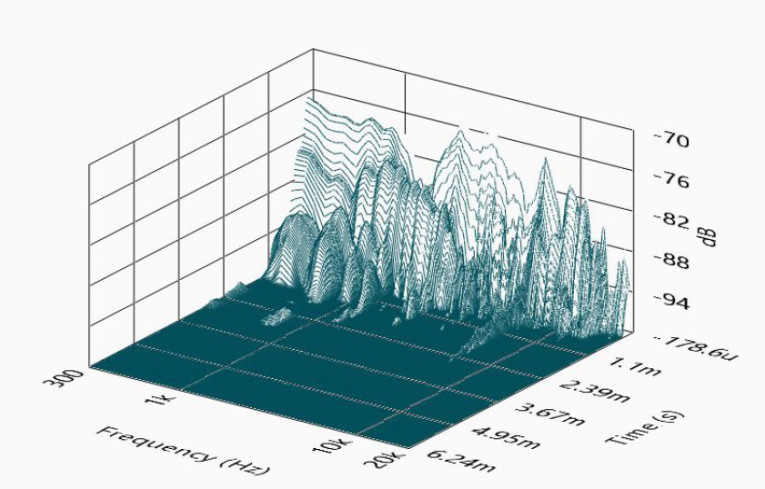

For the remaining series of tests on the Scan-Speak 18WE/4542T00, I again employed the Listen SoundCheck 16 software, AudioConnect analyzer, and SCM microphone to measure distortion and generate time-frequency plots. For the distortion measurement, I mounted the 7” midwoofer rigidly in free air and used the pink noise generator and SLM built into the SoundCheck 16 software to set the SPL to 94 dB at 1 m (3.27 V).
Then, I measured the distortion with the Listen microphone placed 10 cm from the dustcap. This produced the distortion curves shown in Figure 15. As with the Ellipticor D3404/552000, third-order harmonic distortion was extremely low.
For the final test, I used SoundCheck 16 to get a 2.83 V/1 m 18WE/4542T00 impulse response and imported that data into Listen’s SoundMap Time/Frequency software. Figure 16 shows the resulting CSD waterfall plot. Figure 17 shows the Wigner-Ville (for its better low-frequency performance) plot.
The test results for this uniquely configured transducer indicate very solid performance. I plan to use both Ellipticor drivers in an upcoming project, and I can’t wait to hear the results! For more information about these and other Scan-Speak transducers, visit www.scan-speak.dk. VC
This article was originally published in Voice Coil, April 2018




